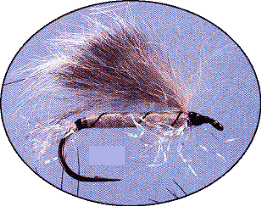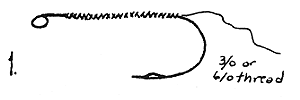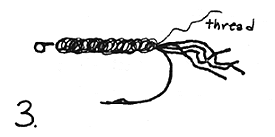|
Rabbit Fur Streamer
When thinking about patterns for this book I went through all the flies in my vests and
kits. Noting that Rabbit Fur Streamers were everywhere and always in my "never leave.
behind" goups, I took a closer look at this fly. Fairly simple in construction and materials
it can be tied with a variety of differences once the basic pattern is understood. Key
characteristics include unusual things like (1) using smaller and shorter hooks than
normally found on streamers, (2) lifelike action of the fly when fished properly and (3)
seems to represent prey food that excites everything from bass to trout to oceanographic
species of fish.
The action comes from the rabbit fur. In fast water it streams back and looks like a small
prey fish with dark, undulating fur waving over a white or light colored underbody. The
addition of flash-a-bou as an overbody covering with trailing tendrils of material mixed
with rabbit fur gives a realistic, small, darting fish action.
Materials Comments
It seems to work best when thin shanked hooks are used with lead foil bodies added
rather than heavy wire hooks. Slightly heavier hooks are used for large and smallmouth
bass than for trout, grayling, goldeye and whitefish. In surf and in the ocean medium
weight hooks work well. Lead foil can easily be obtained from your dentist. These
are thin, cut easily with scissors and can be molded by hand to any shape and cinched
down by any thread without cutting or breaking.
Personally, I bend down the barb and sharpen every hook. Preference is for a fairly long,
thin but not needle-like point because it tends to allow fish to more readily catch
themselves.
Materials List:
Hook: Mustad 94838, Eagle Claw 59F, VMF 3366; #8 - 2 .
Thread: Black, 3/0 - 6/0.
Weight: Thin lead foil such as dental x-ray plates are wrapped in.
Body: White yarn underbody; round braid mylar piping overbody.
Wing: Rabbit fur 'Zonker' strip; any dark color.
|









